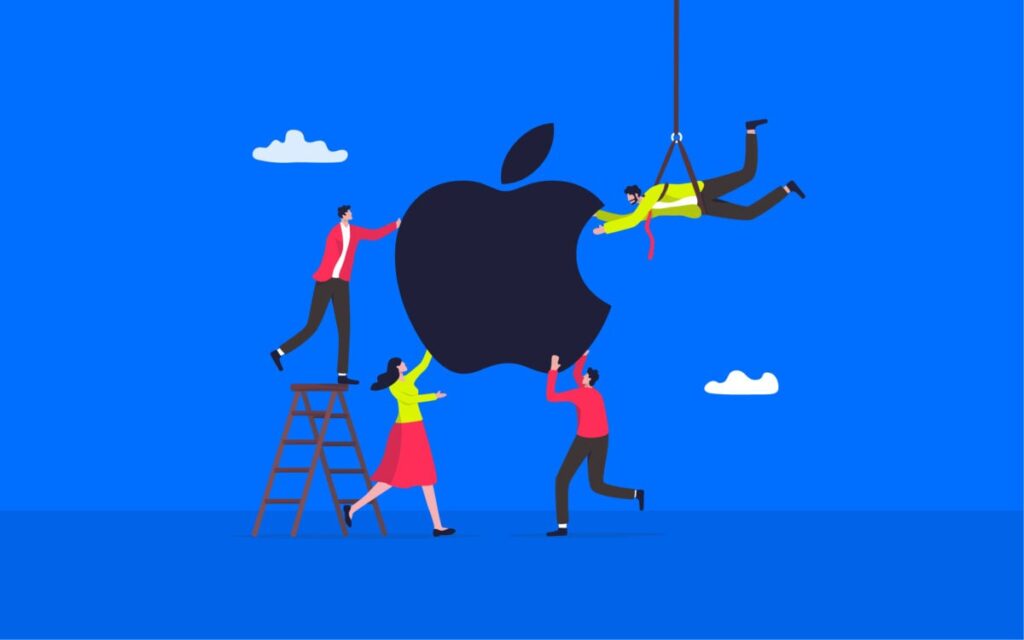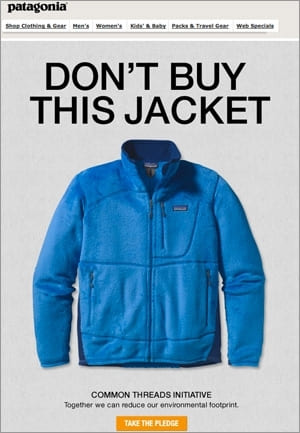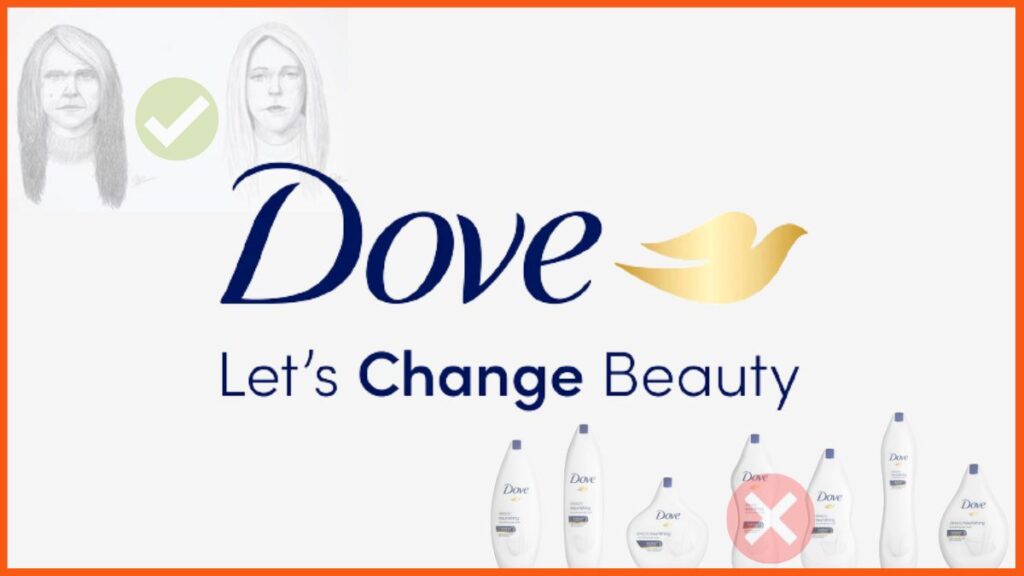
Key Takeaways
- Salesy means applying excessive pressure and tactics to make someone purchase something quickly.
- Phrases to avoid salesy by using superlatives, urgency tactics, excessive exclamation marks, flattery, and generic greetings can convey a salesy vibe.
- Being too salesy can lead to loss of trust, turning potential customers away, a negative brand image, reduced repeat business, and higher customer churn.
- Strategies to avoid appearing overly salesy include focusing on value-centric messaging, sharing educational content, showcasing social proof & many more.
- Success stories in non-salesy marketing brands like Apple, Patagonia, and Dove.
In the world of selling things, you might hear the word “Salesy” often, but what does it mean?
This beginner’s guide is here to clear up the confusion. Whether you’re just starting in marketing and sales or just curious, we’ll explain what “salesy” is all about.
We’ll help you understand how to sell stuff without being pushy or insincere.
By exploring the meaning of “salesy,” delve into phrases that give off a salesy vibe, examine the consequences of being too salesy, and equip you with practical techniques to avoid this pitfall.
By the end of this guide, you’ll know how to find the right balance between selling well and being true to yourself.
Let’s begin this journey together.
Salesy meaning

Salesy means trying too hard to get someone to buy something.
It’s when a person or company uses lots of pressure, excitement, or tricks to make you purchase something, even if it might not be what you need.
For example, if you get a message that says, “Buy now! Amazing offer! Don’t miss out!” with lots of exclamation marks, it’s a salesy approach because it’s trying too hard to make you buy quickly.
Phrases that give off a salesy vibe

1. Using superlatives
Sometimes, when people try to sell something, they use words like “the best,” “guaranteed,” or “unbeatable” a lot.
They might say, “Our product is the best on the market.” But if they can’t prove it, it can sound like they’re just trying to sound good, which can be a turn-off.
Example: Instead of saying that, they can show proof, like, “Lots of people love our product and say it’s great.”
2. Urgency tactics
Some sellers say things like “limited-time offer” or “act now” to make you feel like you have to buy something quickly.
They might say, “Hurry, this offer ends today!” But if there’s no real reason for the hurry, it can make you feel like they’re trying too hard to make you buy.
Example: If there’s a good reason for being quick, they can say, “We have a special sale for one day only. Don’t miss out!”
3. Excessive exclamation marks
Sometimes, people use too many exclamation marks like this: “Get your gift today!!!” It can make them seem too excited and not very honest.
Example: Instead, they can say, “You can get a gift today!” without using so many exclamation marks.
4. Flattery
Sellers might say nice things like, “You’re the most amazing customer ever!” But if they don’t know you, it can feel like they’re just saying that to make you buy.
Example: Instead, they can say, “We appreciate your business,” which is an excellent way to show thanks without going overboard.
5. Generic greetings
Sometimes, sellers use greetings like “Dear Friend” or “To Whom It May Concern,” which don’t feel very personal.
For example: “Dear valued customer” can sound like they don’t know you.
It’s better when they say, “Hello [Your Name], thanks for being our customer.” That makes it feel like they know you, even in a letter or email.
To make this easier, many marketers rely on customizable email templates that include personalized fields so every message feels tailored and authentic.
The consequences of being too salesy

When you come across as overly salesy, it can have several negative consequences that can harm your business and brand. Here are the key drawbacks:
1. Loss of trust
Being excessively Salesy can lead to a loss of trust among your audience.
People become skeptical of your intentions when they feel you’re solely focused on selling rather than genuinely addressing their needs.
Bombarding potential customers with constant sales pitches may erode their initial trust in your brand.
Example: When a customer feels that a salesperson is only interested in closing a deal and not finding the right solution, trust can quickly diminish.
This might result in the customer seeking alternatives from more trustworthy sources.
2. Customer turn-off
Pushy sales tactics can turn potential customers off rather than engaging them.
People generally prefer a more consultative and informative approach when considering a purchase.
If your approach is too aggressive, you risk alienating prospects who would have otherwise shown interest in your products or services.
Example: Imagine a scenario where a salesperson bombards a shopper with constant sales talk in a clothing store.
Instead of making a purchase, the shopper may leave the store feeling overwhelmed and irritated, resulting in a lost sale.
3. Negative brand perception
Overly Salesy approaches can harm your brand’s reputation.
When your brand is associated with aggressive or insincere sales tactics, it can be perceived as less trustworthy and more interested in profit than customer satisfaction.
Example: If customers consistently encounter spammy emails or intrusive pop-up ads from a brand, they may start to view that brand as inauthentic and less credible.
4. Reduced repeat business
Customers are less likely to return if they feel pressured into a purchase.
When customers sense that they were coerced or manipulated into buying something, they are less likely to return for future purchases or recommend your products or services to others.
Example: If a customer feels they were pressured into buying a subscription service, they might cancel it as soon as they can and avoid doing business with the company in the future.
5. Increased churn
Aggressive sales tactics may lead to higher customer attrition or churn rates.
Customers who feel they have been mistreated or deceived are more likely to seek alternatives, resulting in long-term revenue loss.
Example: A telecommunications company that constantly bombards customers with aggressive upselling attempts might experience a higher churn rate as customers switch to competitors who offer a more pleasant and trustworthy experience.
So, being too salesy can have severe repercussions for your business, ranging from eroding trust and turning off potential customers to damaging your brand’s reputation and reducing customer loyalty.
Therefore, it’s essential to balance effective sales strategies and maintain authenticity or trust with your audience.
Tips to avoid being too salesy

Incorporating non-salesy techniques into your marketing and communication can help you build stronger relationships with your audience.
Here are some strategies to avoid coming across as overly salesy:
1. Value-centric messaging
Instead of bombarding potential customers with sales pitches, emphasize how your product or service genuinely benefits them.
Use language that highlights the value you bring to their lives.
Example: Discover how our energy-efficient appliances can lower monthly bills and reduce carbon footprint.
This message focuses on the customer’s benefit (lower bills and environmental impact) rather than simply pushing the product.
2. Educational content
Share informative content that empowers potential customers to make informed decisions.
By providing valuable information, you position your brand as a helpful resource rather than a pushy salesperson.
Example: Learn about the benefits of our innovative solution.
Our blog articles explain how our technology works and how it can solve common problems in your industry.
This approach educates the customer and allows them to see the value in your offering.
3. Social proof
Showcase customer testimonials and reviews to build trust and credibility. Let your satisfied customers speak for you.
Sharing their positive experiences helps potential customers feel more confident in your products or services.
Example: See what our satisfied customers are saying. Read real-life stories of how our software has improved businesses just like yours.
These testimonials offer social proof, indicating that others have found value in your offerings.
4. Customer-centric language
In your messaging, prioritize using of “you” over “we” to emphasize the customer’s benefit.
This approach shifts the focus from your brand to the customer’s needs and desires.
Example: “You’ll love the results. Our product is designed to make your life easier and more enjoyable.
By highlighting the customer’s experience, you make them the center of attention.
5. Ask open-ended questions
Foster engagement by asking questions that invite discussion.
Instead of pushing a sale, encourage a dialogue that allows you to understand your customers’ needs better and tailor your approach accordingly.
Example: What challenges are you facing in your industry? We’d love to hear your thoughts and explore how our solutions can address them.
This approach opens the door for a meaningful conversation rather than a one-sided sales pitch.
Incorporating these salesy-repelling techniques into your marketing strategy can create a more authentic and customer-centric approach.
This helps you avoid the negative perceptions associated with Salesy tactics and fosters trust and long-term relationships with your audience.
Success stories: Brands that excel in non-salesy marketing
Let’s explore some inspiring success stories of brands that have mastered the art of non-salesy marketing.
These companies have achieved remarkable success by focusing on authenticity and value rather than relying on pushy sales tactics.
1. Apple

Apple is renowned for its minimalist design and unwavering commitment to a customer-focused approach.
The key to Apple’s success lies in its ability to let the quality and functionality of its products speak for themselves, eliminating the need for aggressive promotions.
Example: Apple’s product launches are a testament to their non-salesy approach.
Instead of bombarding customers with hard sells, they showcase the features and benefits of their products in a straightforward & informative manner.
It allows consumers to draw their own conclusions.
2. Patagonia

Patagonia stands out for its dedication to sustainability and activism, which goes beyond merely treating customers as consumers.
They engage their audience in a more significant cause, encouraging conscious consumption and environmental responsibility.
Example: Patagonia’s “Don’t Buy This Jacket” campaign was a bold move that challenged the traditional notion of promoting products.
By urging customers to think twice before purchasing, they emphasized the importance of responsible consumption.
This resonated with environmentally-conscious consumers and showcased their commitment to a greater purpose.
3. Dove

Dove’s “Real Beauty” campaign is a shining example of challenging conventional beauty standards and promoting inclusivity.
Their message is one of empowerment and self-acceptance, fostering a positive, inclusive message that resonates deeply with consumers.
Example: Dove’s body-positive ads celebrate diverse beauty by featuring women of all shapes, sizes, and backgrounds.
This approach challenges unrealistic beauty ideals and highlights Dove’s commitment to authenticity and empowering individuals to embrace their uniqueness.
These success stories illustrate that non-salesy marketing can be incredibly effective.
By focusing on authentic messaging, value delivery, and social responsibility, these brands have built strong connections with their customers, fostering loyalty and positive brand perception.
The key takeaway is that businesses can thrive by prioritizing their customers’ needs and values over aggressive sales tactics.
Conclusion
In this beginner guide, we’ve explored what it means to be “salesy” in simple terms.
It’s not just about selling but how you do it. We’ve discussed why being too salesy can be a problem, and we’ve given you tips to avoid it.
As you go on in the world of selling and marketing, remember this: being honest and connecting with people is essential.
Keep what you’ve learned here in mind, and you’ll do a great job of selling without being too salesy.
So, go out confidently, build real customer relationships, and make your mark in sales and marketing.
